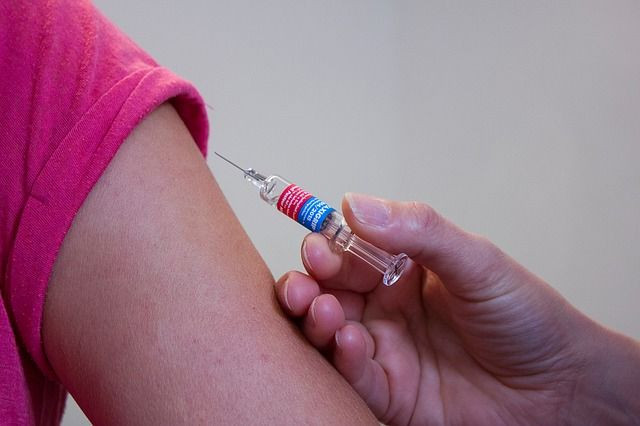New Flu Vaccine Skin Patch Shows Promise

A new type of skin patch being tested as a method of flu vaccination introduces an economical yet effective innovation that might finally do away with the need for needles to deliver vaccines.
There have been many skin patches developed to deliver drugs lessly through the skin but none have gained widespread large-scale use. Many of these patches use microneedles and electroporation or electrotransfer as a delivery mechanism.
Electroporation is a microbiology technique where an electrical field is applied to cells in order to increase the permeability of the cell membrane. This increased permeability allows medicine, chemicals or DNA to be introduced into the cell. Using microneedles and electroporation has proven impractical and uneconomical for mass vaccination, however.
A flu vaccine skin patch detailed in a new clinical study is said to solve many of the problems faced by skin patches using microneedles and electroporation, among others.
Benjamin L. Miller, PhD, one of the authors of the study, said the new patch developed by his team uses a novel approach that exploits a human protein called "claudin-1."
Miller explained that in people with eczema, the human skin that normally prevents toxins and allergens from entering the body stops working properly and becomes permeable or "leaky." He pointed out claudin-1 is essential for preventing leakiness of the skin barrier. He said people with eczema have low levels of claudin-1 compared to those without eczema.
In a previous study, the research team had shown reducing claudin-1 in skin cells of healthy people increased leakiness. This result suggested they could use a similar method to get a flu vaccine virus into the body through the skin.
The tough challenge facing them would be to induce leakiness for a sufficient length of time that lets in the flu vaccine virus but doesn't allow other materials to enter the body. That challenge was overcome.
The team identified a peptide (or small protein) that disrupts the skin barrier without causing toxic side effects. The peptide works by binding to and blocking claudin-1.
The team then created a skin patch containing the peptide and a recombinant flu vaccine and tested it on mice in two ways.
In the first test, researchers applied the skin patch and then gave the mice a flu vaccine by injection. Their aim was to prime the immune system with the patch and then boost immunity with the flu shot. In the second test, researchers gave the mice the flu shot first and then applied the skin patch.
The study reported that in both tests, the patch opened the skin barrier in mice that wore the patch on their shaved backs for 18 to 36 hours. Researchers confirmed this by monitoring the water the mice lost through their skin.
Researchers saw the mice’s skin become permeable when they applied the patch. As soon as they removed the patch, however, they noted the skin began to close again, meaning it was back to normal within 24 hours.
Researchers noted the immune response to the patch in the first test wasn't significant. On the other hand, there was a robust immune response to the skin patch in the second test.
The study pointed out that since humans are exposed to influenza as young as 6 months of age, and as a consequence, most people's immune systems are already primed to the virus, the second test best mimics a real world scenario.
The findings, therefore, suggest the skin patch could serve as a delivery mechanism for the regular seasonal flu vaccine.
Published by Medicaldaily.com



























